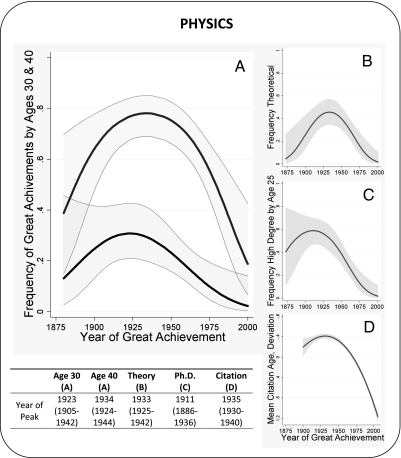Fig. 2.
Dynamics in physics. The figure presents dynamics in age and associated factors for Nobel Prize-winning achievements in Physics. (A) The evolution over time in the frequency of prize-winning contributions by ages 30 (Lower) and 40 (Upper). Shaded regions indicate 95% confidence intervals. (B–D) Related dynamics: the frequency of prize-winning achievements with an important theoretical component (B), the frequency of Nobel Laureates who received their PhD by age 25 (C), and the backward citation age for the top papers in physics (D, inverted y axis), as defined in the text. The table summarizes the year when each measure peaks, with 95% confidence intervals, further indicating similar dynamics across the measures.

